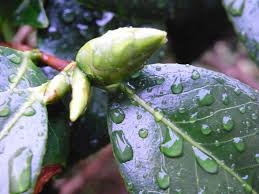
What now?
In the past I was at loose ends at this time of year. Not being an avid winter-garden person, I had too much time on my hands. Sure, the garden always needs some sort of upkeep, but it requires less of my time in the cold months. One can only look at so many seed catalogs.
I am fortunate to have a garden shed. When I opened it the other day to look for a tool, I thought, “Wow, this is a mess. Maybe I should clean up.”
What a concept. Whether you store most of your gardening equipment and supplies in a shed, in your garage or in another protected spot, the area could probably use some tidying up.
My first endeavor was organizing my collection of planters, containers and pots. After emptying them of soil, I sanitized them with a 10 percent bleach solution. Then I stored them upside down in a central location.
The lawn mower was my next project. My husband stressed the importance of removing the spark plug wire before doing any maintenance. As an additional precaution, he advised putting a piece of electrician's tape on the end of the wire to prevent any chance of a spark. I found the manual online. (I'm not a manual keeper.) Following instructions, I scraped out the underside of the mower, removing all the dried debris. Using a water hose with a pressure nozzle, I rinsed it and allowed it to air dry. With my husband holding one end, I sharpened the blade. Then I sprayed a fine coat of penetrating oil on the cleaned underside and blade. Voilà. All done.
After that I was on a roll. I washed out the wheelbarrow and spreader and stored them on end. You can hang them if you have room, or just store them upside down. The objective is to avoid accumulating rainwater.
Next I moved on to my fertilizers and pesticides. I'm not shy about trying new
things, so my supplies were considerable. I set aside all old products, any that I hadn't used in more than a year and any that didn't provide satisfactory results. I then consulted the County of Napa website to find locations for safe disposal.
I divided the remainder into categories like fertilizers, vitamins and pesticides. I found a dry storage area for them all, with the poisons in a separate location. I sorted my irrigation equipment and put small items like drippers in marked sealable bags. I coiled and tied my hoses and hung them on hooks. I was now ready to attack my garden implements and tools.
Being the proud owner of too many garden tools, I was hard-pressed to find storage for all of them. Keeping them clean and in good working order is an ongoing chore. I always intend to clean and sharpen them after each use, but I am not above just tossing and running. So I pulled all my tools out and lined them up on the garage floor, the only covered space available. As I walked down the rows, I mentally divided them into categories by needs and made a mental list. Hand pruner needs sharpening and oiling. Shovel handle split; needs repair. With an actual list in hand, I decided what supplies I would need to rehabilitate each item. Then I got to work. We had to park our cars in the driveway for about a week as I completed this task.
Although I do have a garden shed, I do not have a large expanse of wall to hang tools, nor do I have unlimited floor space. My solution was to store all the long-handled implements upside down in an old wire-framed laundry bag, a lucky garage-sale find. A50-gallon plastic garbage can will also work, with holes drilled in the bottom to prevent moisture accumulation. I put the small hand tools on a shelf in trays and the long-handled tools, handles up, in five-gallon buckets with holes drilled in bottom.
My shed looks marvelous. I am now ready for spring, and those seed catalogs are looking pretty good right now.
Workshop:Napa County Master Gardeners will conduct a workshop on “Creating Wreaths from Your Garden” on Sunday, December 7, from 2 p.m. to 4 p.m., at the Yountville Community Center, 6516 Washington Street, Yountville.Learn which plants from your garden make good wreaths. Learn how to choose and prepare plant materials, and tips and tricks for designing and making easy wreaths for the holidays and beyond. Using materials and supplies provided, participants will create their own wreath to take home. To register, visit the Parks & Recreation Department website.
Master Gardeners are volunteers who help the University of California reach the gardening public with home gardening information. Napa County Master Gardeners ( http://ucanr.org/ucmgnapa/) are available to answer gardening questions in person or by phone, Monday, Wednesday and Friday, 9 a.m. to Noon, at the U. C. Cooperative Extension office, 1710 Soscol Avenue, Suite 4, Napa, 707-253-4143, or from outside City of Napa toll-free at 877-279-3065. Or e-mail your garden questions by following the guidelines on our web site. Click on Napa, then on Have Garden Questions? Find us on Facebook under UC Master Gardeners of Napa County.